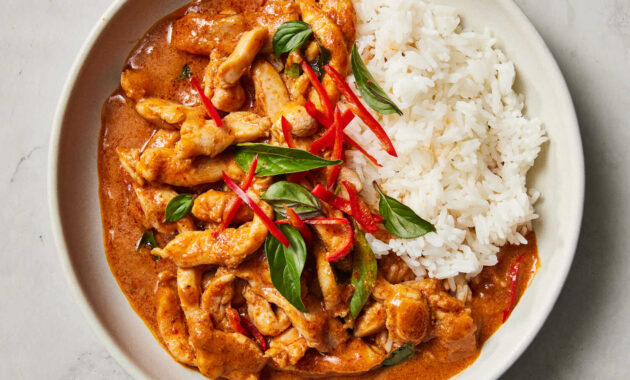Diah’s Bubur Sumsum: The Ultimate Guide to this Indonesian Delight
Bubur Sumsum, a creamy and subtly sweet Indonesian dessert, is a delightful treat that’s both comforting and refreshing. This beloved delicacy, often associated with festive occasions, boasts a smooth texture and a delicate coconut milk flavor that leaves you wanting more. While variations exist across Indonesia, this guide will focus on Diah’s recipe, known for its perfect balance of flavors and textures. We’ll delve into the history, variations, and provide a step-by-step guide to making this exquisite dessert.
A Journey into the Heart of Bubur Sumsum
Bubur Sumsum, literally translating to “marrow porridge,” is named for its creamy, marrow-like texture. Its origins are deeply rooted in Indonesian culinary traditions, where coconut milk plays a central role. This comforting dessert has been passed down through generations, with families sharing their unique adaptations and secrets. Diah’s recipe, often praised for its simplicity and remarkable taste, stands as a testament to this rich culinary heritage.
The Allure of Coconut Milk
The star ingredient of Bubur Sumsum is undeniably coconut milk. Its rich creaminess and subtly sweet flavor form the foundation of this dessert. The quality of the coconut milk significantly impacts the final product; opting for full-fat coconut milk is crucial for achieving that desirable creamy texture. Using lower-fat alternatives will result in a thinner, less satisfying consistency.
Beyond the Basics: Exploring Variations
While the core recipe remains relatively consistent, variations of Bubur Sumsum exist across Indonesia. Some families add pandan leaves for a fragrant, slightly herbaceous aroma. Others incorporate a touch of salt to balance the sweetness, resulting in a more nuanced flavor profile. The addition of gula merah (palm sugar) instead of granulated sugar introduces a richer, more complex sweetness with subtle caramel notes. The possibilities are endless, allowing for personalized adaptations based on individual preferences.
Diah’s Bubur Sumsum Recipe: A Step-by-Step Guide
This recipe, widely considered among the best, delivers a perfectly creamy and flavorful Bubur Sumsum. Follow these instructions closely for optimal results:
Ingredients:
- 1 liter of full-fat coconut milk
- 100 grams of granulated sugar (or to taste, adjust based on preference)
- 1/2 teaspoon of salt
- 1/4 teaspoon of vanilla extract (optional)
- 2 tablespoons of rice flour (can substitute with tapioca starch)
- 2 pandan leaves (optional, tied into a knot)
Instructions:
- In a medium saucepan, combine the coconut milk, sugar, salt, and vanilla extract (if using). If using pandan leaves, add them at this stage.
- Heat the mixture over medium heat, stirring frequently to prevent scorching. Bring it to a simmer.
- In a separate bowl, whisk the rice flour with a little cold water until a smooth paste forms. This prevents clumping.
- Gradually add the rice flour paste to the simmering coconut milk mixture, stirring continuously to prevent lumps. The mixture will start to thicken.
- Continue to simmer and stir for about 5-7 minutes, or until the porridge reaches a desired consistency. It should be thick enough to coat the back of a spoon.
- Remove from heat and discard the pandan leaves (if used).
- Pour the Bubur Sumsum into individual serving bowls. Allow it to cool slightly before serving.
- Serve chilled or at room temperature, garnished with your preferred toppings. Popular choices include toasted coconut flakes, shredded palm sugar, or a drizzle of thick coconut cream.
Serving Suggestions and Variations
Diah’s Bubur Sumsum is delightful on its own, but adding a few extra elements can elevate the experience. Consider these suggestions:
- Toasted Coconut Flakes: Add a delightful crunch and subtle toasted coconut flavor.
- Kue Ku: Serve alongside Kue Ku, a small, sweet cake, for a balanced dessert experience.
- Gula Merah (Palm Sugar): Substitute or supplement granulated sugar with gula merah for a richer, caramel-like sweetness.
- Pandan Leaf Infusion: Infuse the coconut milk with pandan leaves for a fragrant, herbaceous aroma.
- Fresh Fruit: Add slices of fresh mango, jackfruit, or other tropical fruits for a refreshing contrast.
Troubleshooting Tips
Even experienced cooks encounter occasional challenges. Here are some tips to troubleshoot common issues:
- Lumpy Bubur Sumsum: Ensure the rice flour is thoroughly whisked with water before adding it to the boiling mixture. Add it slowly, stirring constantly.
- Too Thin Bubur Sumsum: Increase the amount of rice flour slightly, ensuring it’s well-mixed to avoid lumps.
- Too Thick Bubur Sumsum: Add a little more coconut milk to adjust the consistency.
- Scorching: Stir frequently while heating to prevent the mixture from sticking to the bottom of the pan.
Conclusion
Diah’s Bubur Sumsum recipe offers a simple yet elegant way to enjoy this beloved Indonesian dessert. With its creamy texture, subtle sweetness, and versatility, it’s a perfect treat for any occasion. Experiment with different variations and toppings to personalize your experience and discover your own favorite rendition of this culinary masterpiece.







